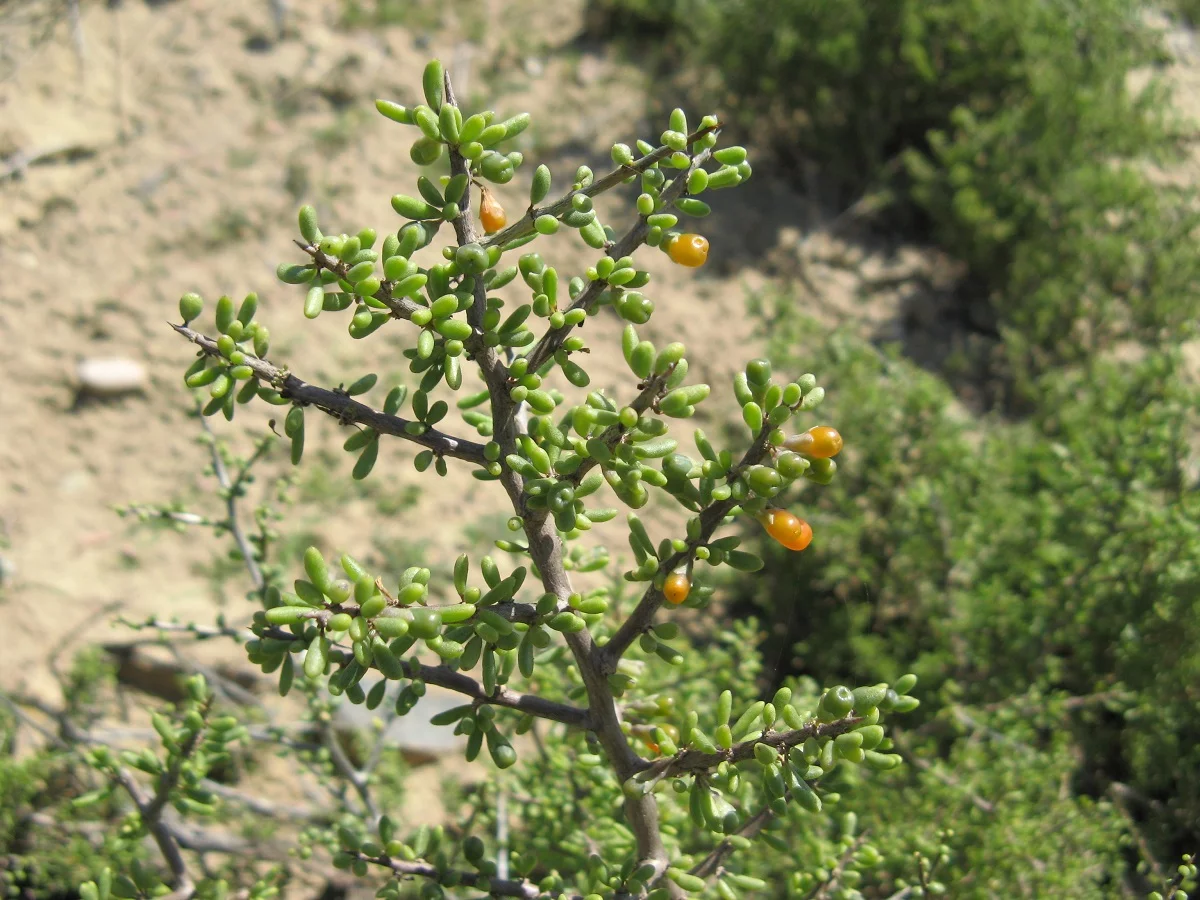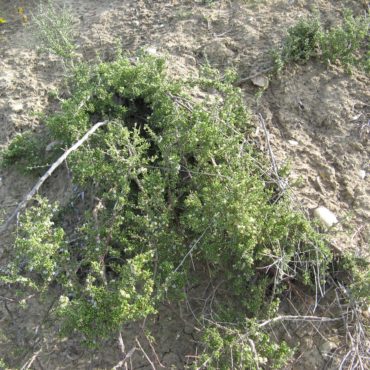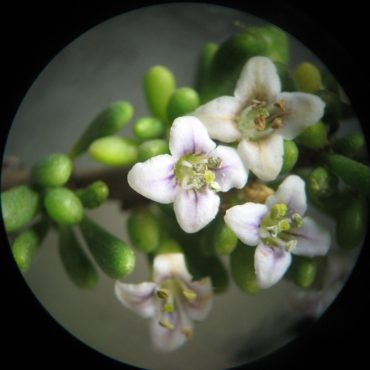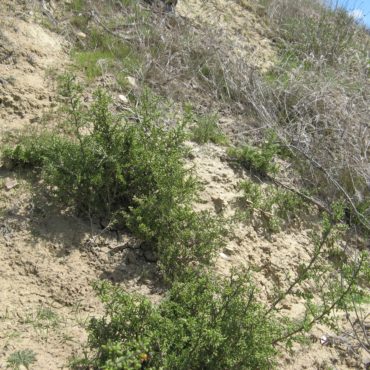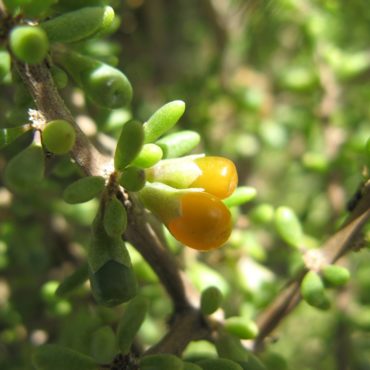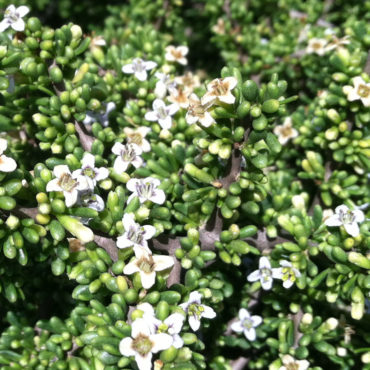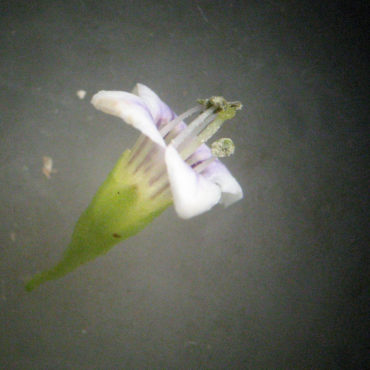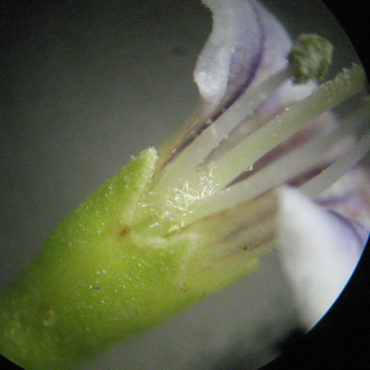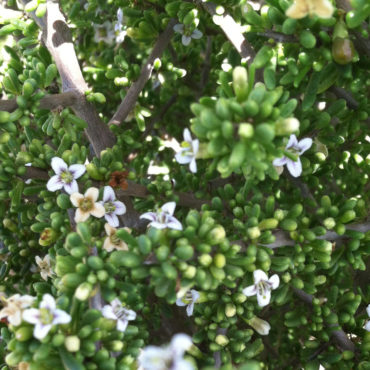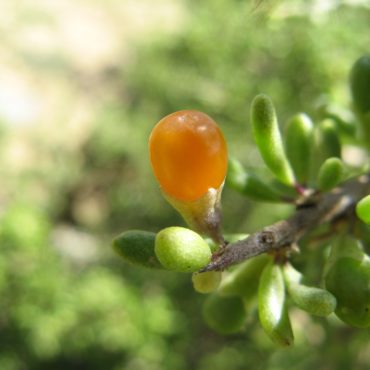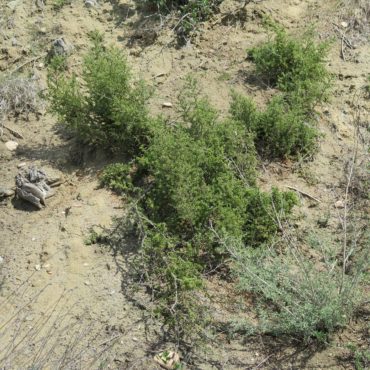California box thorn is a low, dense shrub, usually less than 6 feet in height, with stiff branches and sharply-pointed twigs. Leaves are smooth, bright green and succulent, with short, indistinct petioles. Leaves are linear to oblanceolate, nearly round in cross-section and up to 1/2 inch (1 cm) long, They may be dropped during drought.
The small flowers are bisexual and radially symmetrical, about 1/4 inch (.65 cm) across. The flower parts are in four’s; the calyx has four green lobes and the corolla has four lobes, which are white with pale purple lines, fading to tan as flower ages. Lobes flare outward. There are four stamens that extend somewhat beyond the corolla and have tufts of hair from the lower filaments; these fill the corolla throat and are difficult to see. The single pistil has a superior, green, two-chambered ovary and a white style with a capitate stigma that extends about level with the anthers. A nectary surrounds the lower portion of the ovary. California box thorn usually blooms from March into July,468 earlier with early rains.
The fruit is a pretty red, two-seeded berry, obovate to nearly spherical in shape, about 1/4 inch (0.65 cm) long, with a small indentation at the top.

